Actually yes, people do want virtual museum tours
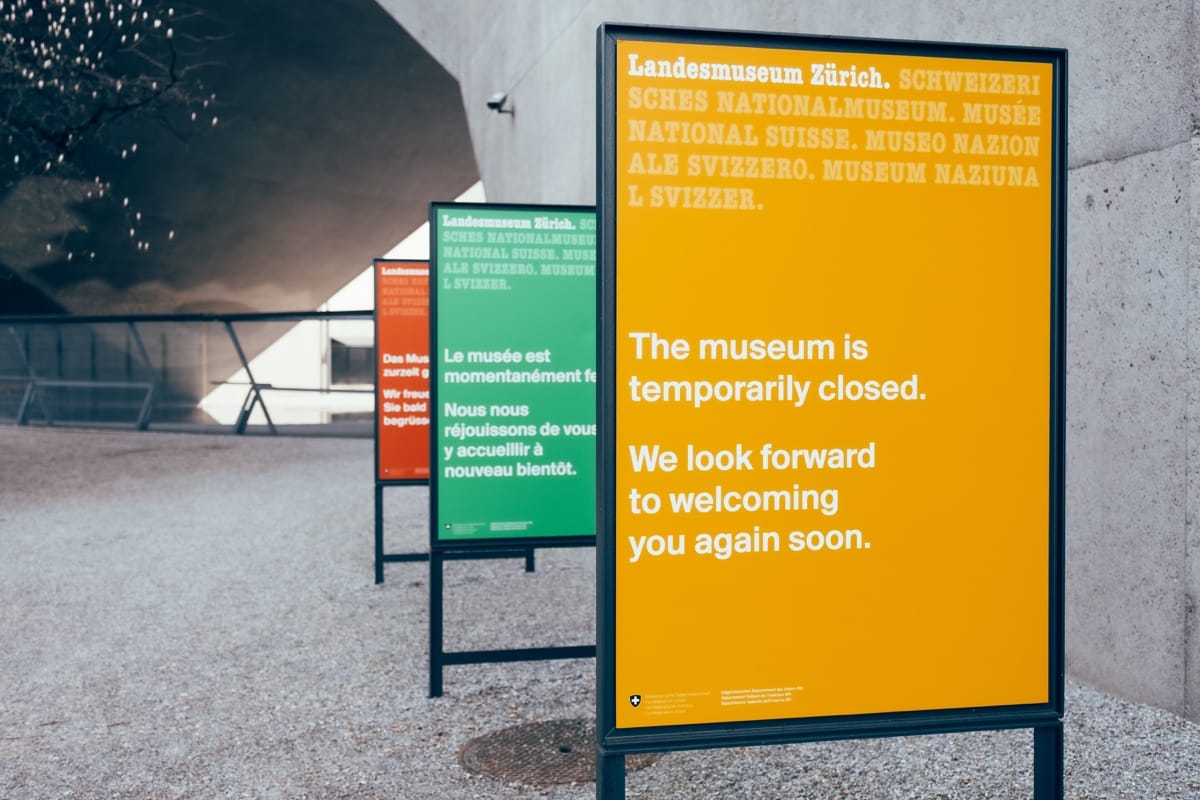
UPDATE: this was written in July 2020. As of December 2024, people aren't searching for this stuff anywhere near as much.
Short version: Contrary to what you might have been told, lots of people are still searching online for virtual museums.
Also, be careful with Google Trends data, don’t believe every smartly written headline you see, and be aware of confirmation bias.
The longer version is that an article has been doing the rounds since 30 April titled People Don’t Want Virtual Museum Tours; Do This Instead.
It’s very forthright, has a grabby title, and has been shared and commented on uncritically by a lot of people (certainly more than are going to share this one).

When I first started reading it I was really interested – there’s a lot of learning to be done right now about what people are looking for online, and this sort of thing is right up my street. But as I read on, well…
Here’s the gist of what it’s saying. While there was a big uptick in searches for virtual museum tours a few weeks back, that interest has peaked, is sharply declining, and instead the following searches are now ‘surging’:
- virtual field trips for kids
- quarantine date ideas
- things to read
The article evidences this with charts from Google Trends showing that those search terms are now more popular than they’ve ever been.
Here they are. If you were picking a winner, which would you absolutely not pick?
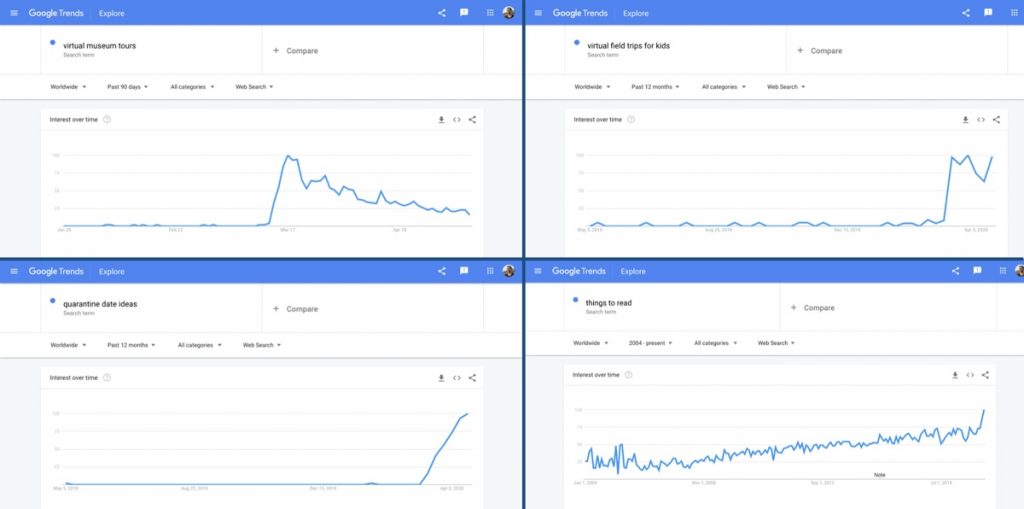
Exactly, you’d tell everyone to steer clear of the one in the top left.
But those charts would also give you entirely the wrong idea about what’s happening.
All they’re doing is showing you when those terms were at their most popular over the past year. Not how popular they are overall, or in comparison to each other.
Comparing the search terms
Google Trends is only useful for relative comparisons – comparing search terms to their own past performance, and against the performance of other terms. Frustratingly, the article actually explains this critical point and then ignores it.
Let’s see what happens when we get Google Trends to overlay the four charts…
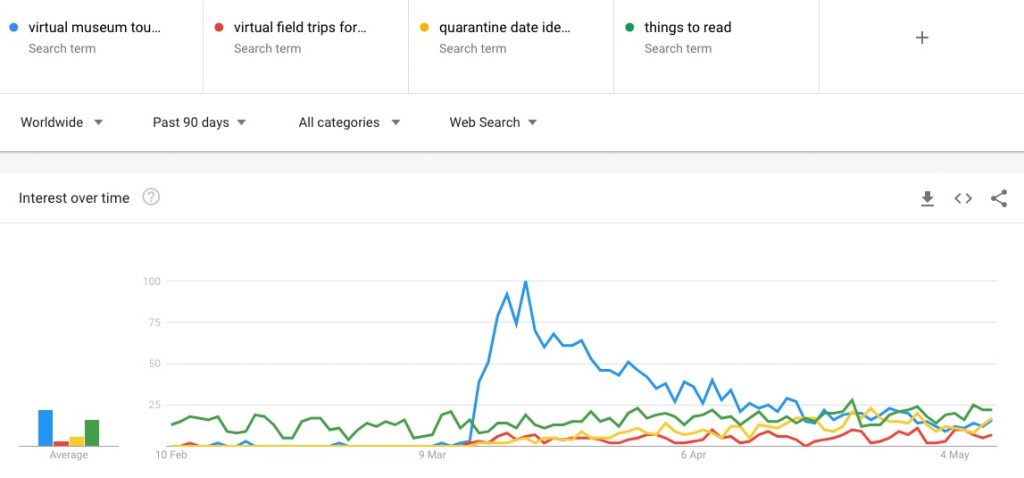
That’s a very different picture (sidenote: all my screenshots are as at 8 May – click the images for the latest data).
Sure, interest in ‘virtual museum tours’ exploded early on and has tailed off since, but it’s still way up from what it was, and only the incredibly generic ‘things to read’ is beating it. That may change at some point, but I wouldn’t say those other terms are exactly ‘surging’ right now.
That’s not the whole story though.
Better terms and even better topics
The next thing to fix is the choice of search terms. We nearly miss out on some very interesting insights with the ones we’re currently labouring with.
In the four original charts, Google Trends is being asked to show ‘search terms’. That means it’ll return the relative popularity of those exact words.
In which case:
- Why specify virtual museum tours? Isn’t ‘virtual museum’ specific enough?
- Who searches for virtual field trips for kids? Aren’t they all for kids?
We’re looking for broad trends here. If we focus on search terms that are too specific then we risk missing out on higher volume searches and the bigger picture.
Again, frustratingly, the article points out that “to a degree you still need to pinpoint an accurate search” but does nothing to solve for it.
If we tweak those two search terms the chart changes in a really interesting way.
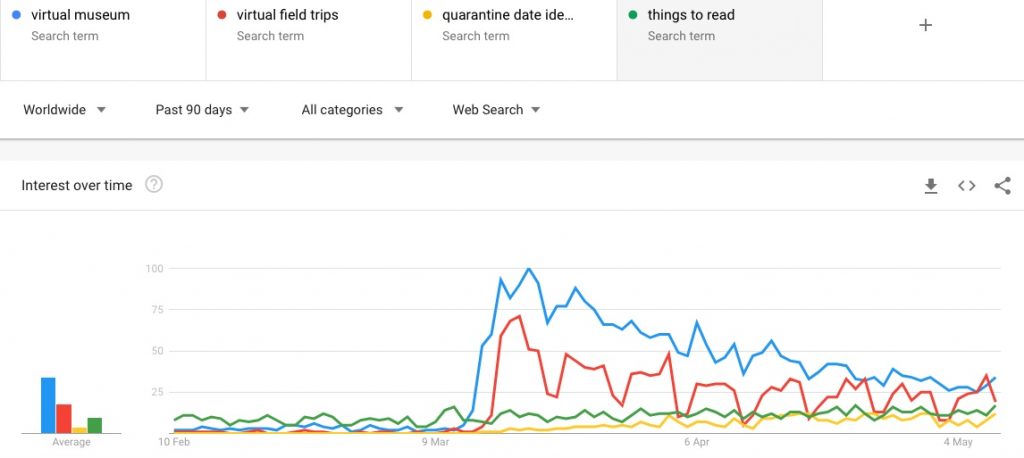
We can immediately see that ‘virtual field trips’ is a much more popular term and has a very different pattern to it. It’s gone from trailing along the bottom of the chart to almost (but not quite) reaching ‘virtual museum’ levels of interest.
We can also see that it spiked early on and has been declining week on week ever since. Just like ‘virtual museum’.
But overall, we see that ‘virtual museum’ has been, and still is, a more popular term than any of the others (save for a brief moment on 7 May).
There’s another improvement we can make.
Picking the right search terms in Google Trends can be a pain. Sometimes there isn’t a single term that’s applicable and we want to group together different variations – singular, plural, and modifiers like ‘near me’ or ‘for kids’.
Language is an issue too. These charts have the location set to ‘worldwide’. I’m guessing not many people in Spain or India are likely to type ‘virtual museum tours’ in English (in fact, why guess?).
Happily, we can use ‘topics’ in Google Trends to group together terms that share the same concept in any language. So let’s do that (sadly there aren’t topics for ‘quarantine date ideas’ or ‘things to read’).
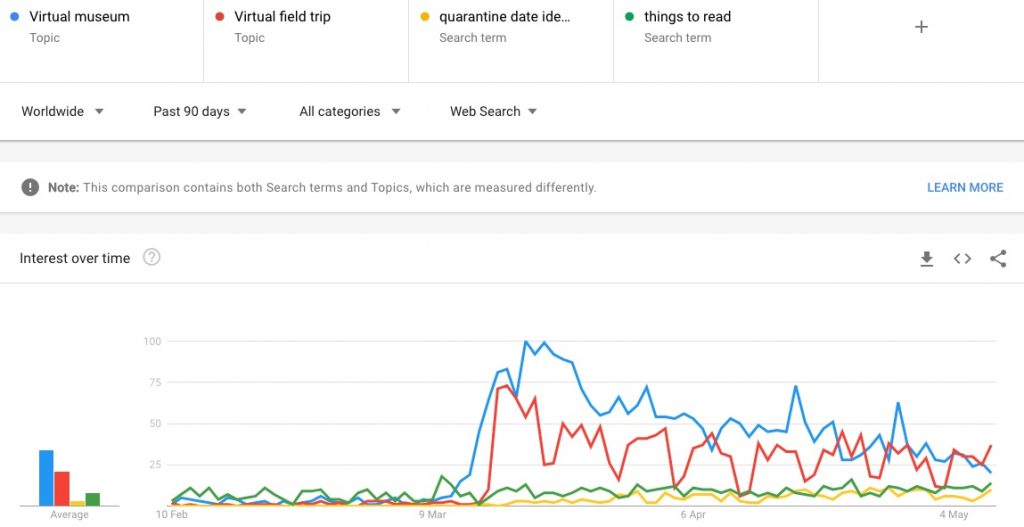
There we go. We can see that ‘virtual museum’ and ‘virtual field trip’ both surged in popularity and have both declined, while still being relatively much more popular than they were before mid-March.
Would we conclude from this data that people aren’t interested in virtual museums? Or virtual field trips? Of course not.
Do people want virtual museum tours?
Yes. They’re still showing interest in the concept. For now.
Is interest growing in other terms like virtual field trips for kids, quarantine date ideas, and things to read? Not really. That doesn’t mean there’s not some interest there, but I wouldn’t bet the viability of my organisation on those particular terms.
Does everyone want to visit virtual museums? Of course not. Are they the only things people want? Don’t be daft. Why are people in the museum sector so keen on giving the concept of virtual museums a kicking? Don’t get me started.
To be absolutely fair, Museum Hack posted something of a clarification/row back…
But nuance doesn’t get your article shared by hundreds of people who don’t think for themselves. Actually, that’s unfair – neither of us has a particular interest in torturing this data until it tells us what we want.
I should also mention that I quite like what Museum Hack are doing generally and, as much as the article irked me, I’ve only really written this because of the reaction to it.
Why not both?
Of course, contrary to the title of the original article, none of these things are mutually exclusive. With time and resource, there’s no reason you couldn’t do all of these:
- Create some form of virtual museum tour
- Package up experiences as virtual field trips for schools. Bear in mind that ‘field trips’ is a more generic term and that’ll mean more competition
- Write a blog post on quarantine date ideas that use your museum, objects, or subject matter as inspiration, AND
- Publish a list of top things to read, linking back to your old posts, cross-linking to other institutions/publications, and highlighting books in your shop
Some of these things are going to be more in keeping with what a museum’s audience might expect from them. Some might be more suited to being offered by a tour company.
Although, if you didn’t have the assets and processes ready to go pre-lockdown, then items 1 and 2 might be tricky. Perhaps 3 and 4 are more easily doable.
Sidenote: it’s no huge surprise that the organisations that’ve been taking digital activity seriously over the past few years are the ones who’ve been better able to adapt to the current situation.
I would also drop in a couple of caveats…
You should be informed by this data, not driven by it. Let’s not forget that the data we’re looking at here is what the worldwide population are typing in to Google:
- Just because people aren’t actively searching for something, doesn’t mean that they won’t want it (search isn’t a channel for discovering new things)
- If people are searching for these things then unless your content is showing up near the top of Google’s search results you won’t get much of a bump in your website traffic, and
- To the extent that the data shows what people are interested in generally (and that you can present to them through channels other than search engines), bear in mind that your audiences may not reflect the worldwide population
What else do people want?
Right now, who really knows? But I’m guessing it’s the same things they’ve always sought out. Expertise, distraction, connection, things to do, familiar things, new discoveries, a nice setting for some other activity, something to show off…
Some of those might be solved by a virtual tour of a museum, or some inventive homebound date ideas, but some won’t.
I suspect lots of people would actually quite like to visit museums but are settling for the next best thing.
I’ll end with one last chart.
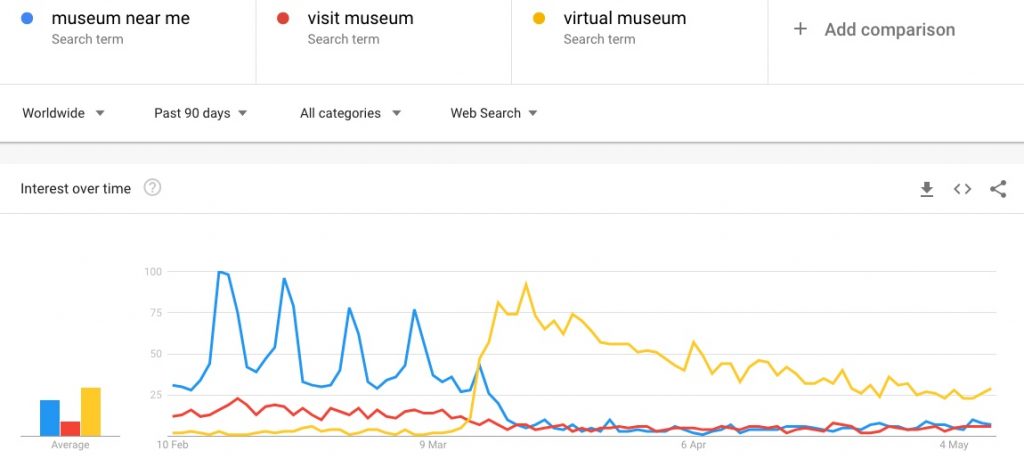
One interpretation (and we do have to be careful with this type of data) would be that people with some sort of propensity for visiting virtual museums are as interested in visiting virtual ones as they were in visiting actual ones.
In which case, rather than dismiss that interest, we should think about how best to respond to that interest, welcome people in, and make them want to tell others about their great experience.
(Photo by Andrea Ang on Unsplash)